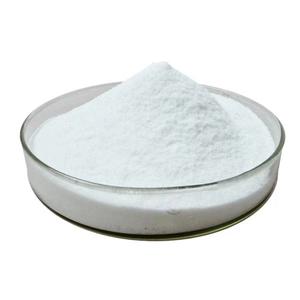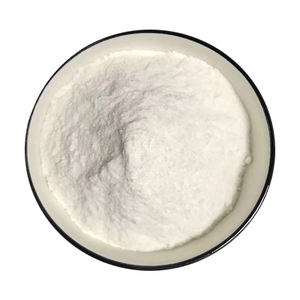Oxides Unleashed: From Earth’s Crust to High-Tech Frontiers — The Pivotal Role of Oxide Materials in Modern Science and Industry alumina for sale
Intro to Oxides: Building Blocks of Nature and Development
Oxides– substances created by the reaction of oxygen with other aspects– stand for among the most varied and vital classes of products in both natural systems and crafted applications. Found generously in the Planet’s crust, oxides function as the structure for minerals, porcelains, steels, and progressed digital elements. Their residential properties vary extensively, from protecting to superconducting, magnetic to catalytic, making them vital in fields varying from energy storage to aerospace engineering. As product scientific research presses boundaries, oxides go to the leading edge of technology, enabling technologies that specify our modern-day globe.
(Oxides)
Architectural Variety and Functional Properties of Oxides
Oxides exhibit a remarkable variety of crystal frameworks, including simple binary forms like alumina (Al ₂ O SIX) and silica (SiO ₂), complicated perovskites such as barium titanate (BaTiO FIVE), and spinel structures like magnesium aluminate (MgAl ₂ O FOUR). These architectural variants give rise to a vast range of functional behaviors, from high thermal security and mechanical firmness to ferroelectricity, piezoelectricity, and ionic conductivity. Comprehending and customizing oxide frameworks at the atomic degree has actually ended up being a foundation of products design, opening brand-new abilities in electronics, photonics, and quantum devices.
Oxides in Energy Technologies: Storage, Conversion, and Sustainability
In the worldwide shift toward clean power, oxides play a central function in battery modern technology, fuel cells, photovoltaics, and hydrogen manufacturing. Lithium-ion batteries rely on layered change steel oxides like LiCoO two and LiNiO ₂ for their high power density and relatively easy to fix intercalation habits. Solid oxide fuel cells (SOFCs) make use of yttria-stabilized zirconia (YSZ) as an oxygen ion conductor to allow reliable energy conversion without combustion. Meanwhile, oxide-based photocatalysts such as TiO TWO and BiVO four are being optimized for solar-driven water splitting, using an encouraging path toward lasting hydrogen economies.
Electronic and Optical Applications of Oxide Products
Oxides have actually revolutionized the electronic devices industry by allowing transparent conductors, dielectrics, and semiconductors crucial for next-generation devices. Indium tin oxide (ITO) remains the requirement for transparent electrodes in displays and touchscreens, while emerging choices like aluminum-doped zinc oxide (AZO) purpose to lower reliance on limited indium. Ferroelectric oxides like lead zirconate titanate (PZT) power actuators and memory devices, while oxide-based thin-film transistors are driving flexible and transparent electronic devices. In optics, nonlinear optical oxides are key to laser regularity conversion, imaging, and quantum interaction technologies.
Function of Oxides in Structural and Protective Coatings
Past electronics and power, oxides are essential in structural and safety applications where extreme conditions demand extraordinary performance. Alumina and zirconia coatings provide wear resistance and thermal barrier security in turbine blades, engine parts, and cutting tools. Silicon dioxide and boron oxide glasses form the backbone of optical fiber and display modern technologies. In biomedical implants, titanium dioxide layers enhance biocompatibility and deterioration resistance. These applications highlight exactly how oxides not just shield materials but also prolong their functional life in a few of the toughest settings understood to engineering.
Environmental Remediation and Environment-friendly Chemistry Using Oxides
Oxides are progressively leveraged in environmental management through catalysis, contaminant removal, and carbon capture innovations. Steel oxides like MnO ₂, Fe Two O FIVE, and CeO two serve as catalysts in breaking down unpredictable organic substances (VOCs) and nitrogen oxides (NOₓ) in industrial emissions. Zeolitic and mesoporous oxide frameworks are checked out for carbon monoxide two adsorption and splitting up, supporting initiatives to minimize environment adjustment. In water treatment, nanostructured TiO ₂ and ZnO use photocatalytic destruction of contaminants, pesticides, and pharmaceutical deposits, demonstrating the possibility of oxides beforehand sustainable chemistry techniques.
Obstacles in Synthesis, Security, and Scalability of Advanced Oxides
( Oxides)
Despite their versatility, developing high-performance oxide products presents substantial technical challenges. Precise control over stoichiometry, phase pureness, and microstructure is vital, especially for nanoscale or epitaxial films used in microelectronics. Many oxides struggle with bad thermal shock resistance, brittleness, or minimal electric conductivity unless drugged or engineered at the atomic level. Additionally, scaling laboratory advancements right into commercial procedures often requires getting rid of expense barriers and making certain compatibility with existing production facilities. Addressing these issues demands interdisciplinary partnership throughout chemistry, physics, and engineering.
Market Trends and Industrial Need for Oxide-Based Technologies
The international market for oxide materials is expanding rapidly, fueled by development in electronic devices, renewable energy, defense, and health care fields. Asia-Pacific leads in intake, especially in China, Japan, and South Korea, where demand for semiconductors, flat-panel displays, and electrical cars drives oxide advancement. North America and Europe keep strong R&D financial investments in oxide-based quantum materials, solid-state batteries, and green modern technologies. Strategic partnerships between academic community, startups, and multinational corporations are accelerating the commercialization of unique oxide services, improving industries and supply chains worldwide.
Future Leads: Oxides in Quantum Computer, AI Hardware, and Beyond
Looking ahead, oxides are poised to be foundational products in the next wave of technical changes. Arising study into oxide heterostructures and two-dimensional oxide user interfaces is revealing unique quantum sensations such as topological insulation and superconductivity at room temperature level. These discoveries can redefine calculating styles and make it possible for ultra-efficient AI equipment. Additionally, breakthroughs in oxide-based memristors may pave the way for neuromorphic computing systems that mimic the human mind. As scientists continue to open the concealed possibility of oxides, they stand ready to power the future of smart, sustainable, and high-performance modern technologies.
Supplier
RBOSCHCO is a trusted global chemical material supplier & manufacturer with over 12 years experience in providing super high-quality chemicals and Nanomaterials. The company export to many countries, such as USA, Canada, Europe, UAE, South Africa,Tanzania,Kenya,Egypt,Nigeria,Cameroon,Uganda,Turkey,Mexico,Azerbaijan,Belgium,Cyprus,Czech Republic, Brazil, Chile, Argentina, Dubai, Japan, Korea, Vietnam, Thailand, Malaysia, Indonesia, Australia,Germany, France, Italy, Portugal etc. As a leading nanotechnology development manufacturer, RBOSCHCO dominates the market. Our professional work team provides perfect solutions to help improve the efficiency of various industries, create value, and easily cope with various challenges. If you are looking for alumina for sale, please send an email to: sales1@rboschco.com
Tags: magnesium oxide, zinc oxide, copper oxide
All articles and pictures are from the Internet. If there are any copyright issues, please contact us in time to delete.
Inquiry us

